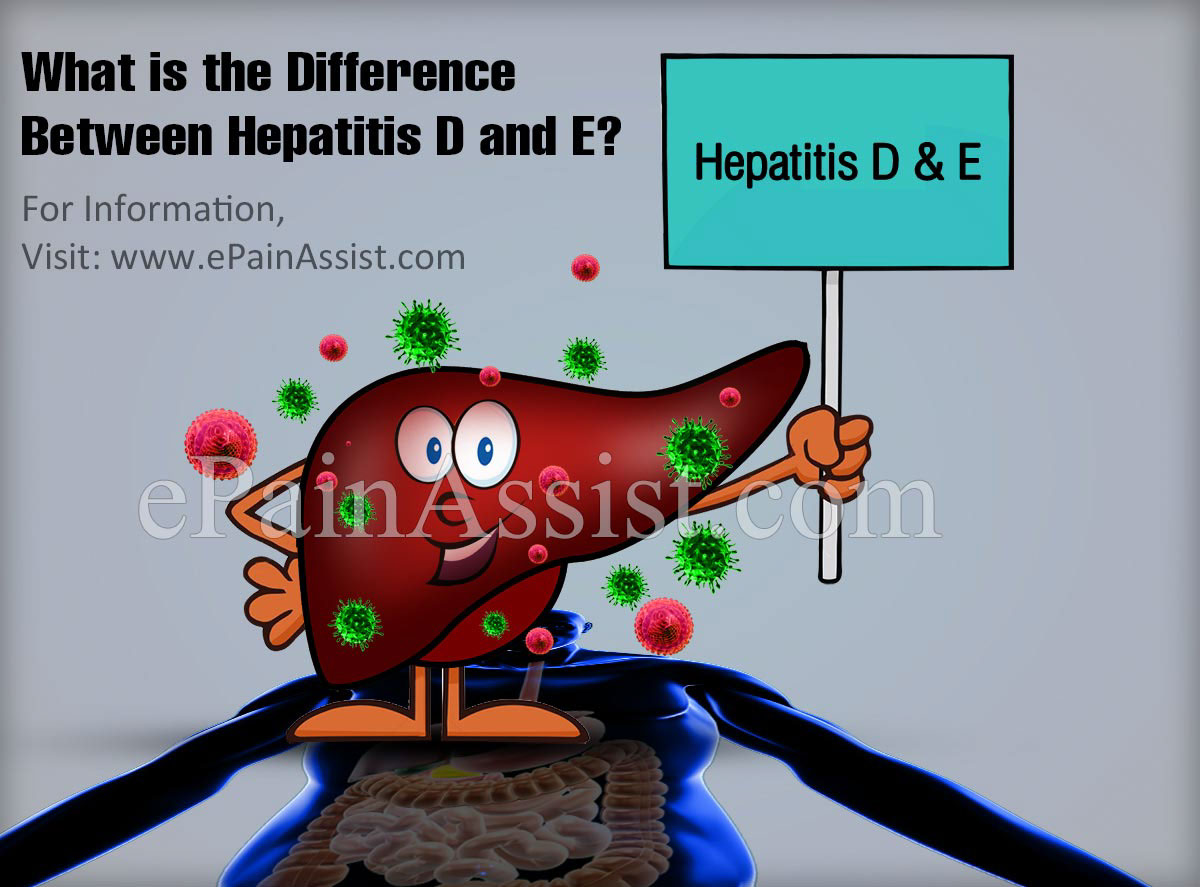What is the Difference between Hepatitis D and E?
Hepatitis D (HDV) and Hepatitis E (HEV) share some differences, but the most relevant is the mechanism of transmission: in HDV it is via permucosa or percutaneous, which denotes by way of, or through, a mucous membrane or skin; while in the case of HEV typically require oro-fecal transmission, caused by the consumption of contaminated water.

About Hepatitis D
The delta virus or virus D (VHD) is a defective virus that needs the presence of Hepatitis B virus to produce infection. The virion has a lipoprotein envelope formed by HBsAg and an internal protein structure where the viral genome resides, constituted by a single strand of RNA that forms a complex with the only antigen encoded by the virus itself, HDAg. Infection is very common in children and young individuals. The transmission is permucosa or percutaneous and is favored with the lack of hygiene. Infection with HDV should be suspected in patients who come from endemic areas (eastern European countries, Mediterranean and Central America) and in drug users administered parenterally and never in the absence of HBV infection. Different clinical situations related to HDV infection such as HBV / HDV coinfection, HDV superinfection in patients already infected with HBV or chronic HDV infection can be characterized by studying the presence or absence of viral RNA, HDAg and anti-HIV antibodies. –VHD.
The clinical presentations of the infection can vary from acute benign forms, chronic forms sometimes asymptomatic to fulminant hepatitis. Simultaneous infection with HDV and HBV (co-infection) usually leads to acute hepatitis, often self-limited and indistinguishable from acute HBV hepatitis alone. Infection with HDV in patients previously infected with HBV (superinfection) usually has a worse prognosis, causes severe acute hepatitis or an exacerbation of chronic hepatitis B. The evolution to a chronic form of hepatitis due to HDV occurs in almost all patients.
The presence of VHD should not be sought in the absence of HBV. The microbiological diagnosis of HDV is based on the detection and/or quantification of antigens, antibodies and the genome of the virus. The samples of choice are serum and, in certain cases, liver biopsy.
About Hepatitis E
It is the leading cause of hepatitis and jaundice in the world with 20 million new infections, 3 million acute hepatitis and 57,000 deaths each year. Hepatitis E is a viral infection of typically orofecal transmission, mainly through contaminated water. Its clinical characteristics are those of an acute hepatitis similar to that produced by the HAV.
The hepatitis E virus (HEV) belongs to the family Hepeviridae and constitutes the genus Hepevirus. It is an RNA virus, of positive polarity and small size, without envelope, and icosahedral. There are 4 genotypes described, of which I and II affect exclusively man and III and IV to man and animals, especially pigs. Its transmission mechanism is very similar to that of hepatitis A and, like this one, hepatitis E usually does not become chronic. Although the disease generally presents a low mortality (0.2-0.3%), it can become extremely serious in pregnant women, where it frequently causes fulminant hepatic failure with mortality rates between 20-30% and in immunocompromised patients.
The average incubation period for hepatitis E is about 40 days. The elevation of serum liver enzyme values usually occurs between 30 and 120 days after infection. Fecal excretion of HEV begins about a week before the onset of disease symptoms and continues for 2 or 3 weeks afterwards. The “icteric” phase is characterized by the appearance of a yellowish coloration on the skin and mucous membranes, associated with a flu-like condition. You can also observe coluria (presence of bile elements in urine), clay-colored stools, hepato- and splenomegaly (enlarged liver and spleen), erythema and itching rash, etc.
Enzyme immunoassays are the main diagnostic tool for the detection of antibodies against HEV. The genome (RNA) of HEV can be detected in stool and serum by RT-PCR. Its detection indicates active infection. The diagnosis of the infection by the HEV is very similar to the one of the infection by the HAV and is based on the indirect detection of specific antibodies of type IgM and IgG that constitute the serological markers of the infection.
- World Health Organization (WHO) – Hepatitis D: https://www.who.int/news-room/fact-sheets/detail/hepatitis-d
- World Health Organization (WHO) – Hepatitis E: https://www.who.int/news-room/fact-sheets/detail/hepatitis-e
- Centers for Disease Control and Prevention (CDC) – Hepatitis D: https://www.cdc.gov/hepatitis/hdv/index.htm
- Centers for Disease Control and Prevention (CDC) – Hepatitis E: https://www.cdc.gov/hepatitis/hev/index.htm
- Mayo Clinic – Hepatitis D: https://www.mayoclinic.org/diseases-conditions/hepatitis-d/symptoms-causes/syc-20353253
- Mayo Clinic – Hepatitis E: https://www.mayoclinic.org/diseases-conditions/hepatitis-e/symptoms-causes/syc-20367067
Also Read:
